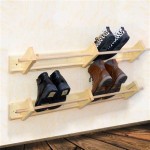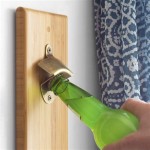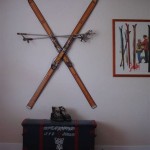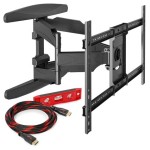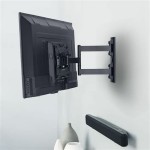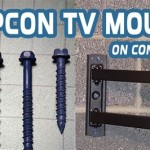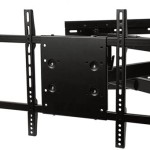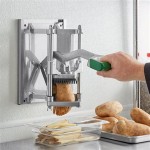```html
70 Inch TV Wall Mount Full Motion: A Comprehensive Guide
Selecting the appropriate 70 inch TV wall mount full motion involves careful consideration of various factors. This guide provides a detailed overview of the essential aspects to ensure a successful and safe installation. A 70 inch television represents a significant investment, and its proper mounting is crucial for both viewing experience and safety.
The market offers a diverse range of full motion TV wall mounts, each with specific features and capabilities. Understanding these differences is paramount in making an informed decision. This article examines weight capacity, VESA compatibility, extension range, swivel capabilities, and the materials used in construction. It also addresses installation considerations and safety precautions.
Understanding Full Motion Capabilities
The primary advantage of a full motion TV wall mount is its ability to extend, retract, and swivel the television. This flexibility allows for optimal viewing angles from various locations within a room. The "full motion" designation indicates that the mount can move both horizontally (swivel) and vertically (tilt), as well as extend outwards from the wall. This adjustability is particularly beneficial in rooms with multiple seating areas or where glare from windows is a concern.
Extension range refers to the maximum distance the TV can be extended from the wall. A longer extension range allows for a wider range of viewing angles and can be especially useful for larger rooms. Swivel capabilities define the degree to which the TV can be rotated horizontally. A greater swivel range provides more flexibility in directing the screen towards different seating arrangements. Tilt capabilities, while often less extensive than swivel, allow for vertical adjustment to compensate for viewing angles from lower or higher seating positions.
These movements are typically facilitated by a series of articulated arms and joints. The quality and construction of these components directly influence the smoothness and stability of the mount's movement. A robust and well-engineered mount will provide effortless adjustments and maintain a secure grip on the television, even when fully extended.
Essential Considerations: Weight Capacity and VESA Compatibility
Two of the most critical factors in selecting a 70 inch TV wall mount full motion are weight capacity and VESA (Video Electronics Standards Association) compatibility. Ignoring either of these specifications can lead to serious consequences, including damage to the television or the wall, and potential injury.
Weight capacity refers to the maximum weight the mount is designed to support. This information is typically provided by the manufacturer and should be carefully considered in relation to the weight of the 70 inch TV. Exceeding the stated weight capacity can compromise the structural integrity of the mount, leading to instability and potential failure. Always select a mount with a weight capacity that exceeds the television's weight by a safe margin, typically at least 10-20%.
VESA compatibility refers to the standardized mounting hole pattern on the back of the television. This pattern is defined by two numbers, representing the horizontal and vertical distances between the mounting holes in millimeters. For example, a VESA pattern of 400x400 indicates that the mounting holes are 400mm apart horizontally and 400mm apart vertically. It is crucial to ensure that the chosen TV wall mount supports the VESA pattern of the 70 inch television. Most manufacturers provide this information in the product specifications. Adapters are sometimes available to accommodate different VESA patterns, but it is always preferable to select a mount that natively supports the television's VESA configuration.
Installation Best Practices and Safety Precautions
Proper installation is paramount for the safety and functionality of a 70 inch TV wall mount full motion. A poorly installed mount can pose a significant risk, potentially leading to the television falling from the wall. It is strongly recommended that installation be performed by a qualified professional, particularly if there is any uncertainty about the process or structural integrity of the wall.
Before beginning the installation, it is essential to locate the wall studs. These are the vertical framing members that provide the necessary support for the mount and television. A stud finder can be used to accurately locate the studs behind the wall. It is imperative to securely attach the mount to the studs using appropriate hardware, such as lag bolts. Attaching the mount to drywall alone is insufficient and will not provide adequate support.
Consider the type of wall construction. Concrete or brick walls require specialized mounting hardware and techniques. Hollow walls, common in new construction, may necessitate additional reinforcement to ensure sufficient support. It's recommended to consult with a structural engineer for guidance in these cases. The kit should include the necessary hardware specific to your wall type.
Leveling the mount is critical to ensure that the television is displayed straight. Use a level to verify the horizontal and vertical alignment of the mount before tightening the hardware. Once the mount is securely attached to the wall, carefully attach the television to the mount, following the manufacturer's instructions. Ensure that all screws and bolts are tightened to the appropriate torque specifications.
Consider wire management for aesthetics and safety. Invest in cable sleeves or channels to conceal and organize the power cords and signal cables. This not only improves the appearance but also reduces the risk of tripping hazards. Adequate space should be left for the cables to move freely without straining the connections when the mount is extended or swiveled.
After installation, test the full range of motion of the mount to ensure smooth and stable operation. Check for any signs of stress or instability. Periodically inspect the mount and hardware for any signs of loosening or wear. Tighten any loose connections as needed. If any concerns arise, consult with a qualified professional.
The materials used in constructing the mount influence its durability and weight capacity. High-quality steel is a common material, known for its strength and resistance to corrosion. Some mounts may incorporate aluminum components to reduce weight. The finish should be durable and resistant to scratches and wear. Powder coating is a common finishing technique that provides a durable and aesthetically pleasing surface.
Consider the wall type when selecting a mount. Drywall walls require secure attachment to wall studs. Concrete walls require specialized anchors and drilling techniques. Hollow walls may require additional reinforcement. The manufacturer's instructions typically provide guidance on the appropriate mounting hardware for different wall types. If uncertain, consult with a professional installer.
Aesthetics also play a role in the selection process. Consider the design and finish of the mount in relation to the surrounding decor. Some mounts are designed to be more discreet, while others may have a more prominent appearance. Wire management features can help to maintain a clean and organized appearance.
The user experience is also an important factor. Look for mounts that offer smooth and effortless movement. The adjustment mechanisms should be easy to operate and provide precise control over the viewing angle. Some mounts may offer features such as tool-free adjustments or locking mechanisms to secure the television in a specific position.
Warranty coverage provides peace of mind and protection against manufacturing defects. A longer warranty period indicates greater confidence in the product's quality and durability. Review the warranty terms and conditions carefully to understand the coverage limitations.
Customer reviews can provide valuable insights into the performance and reliability of different TV wall mounts. Read reviews from other users to gain a better understanding of their experiences with specific products. Pay attention to comments regarding ease of installation, stability, and overall satisfaction.
Budget is always a consideration. TV wall mounts range in price from relatively inexpensive to quite expensive. Determine a budget that is appropriate for your needs and priorities. While it is tempting to save money by purchasing a cheaper mount, it is important to prioritize safety and quality. A higher-quality mount may offer better performance, durability, and longevity.
The installation process should be carefully planned and executed. Gather all the necessary tools and equipment before beginning the installation. Read the manufacturer's instructions thoroughly and follow them carefully. If you are not comfortable performing the installation yourself, it is best to hire a professional installer.
After the installation is complete, double-check all connections and ensure that the television is securely mounted. Test the full range of motion of the mount to ensure that it operates smoothly and safely. Periodically inspect the mount and hardware for any signs of loosening or wear. Tighten any loose connections as needed.
```
Full Motion Tv Wall Mount With 3 Arms 32 70

Electric 26 In To 70 Full Motion Tv Wall Mount Kit Xd2470 The Home

Onn Corner Full Motion Tv Mount 37 70 Wal Com

Xtreme 32 70 Inch Full Motion Wall Mount Flat Panel Tvs Holds 88 Lbs Swivels And Tilts Compatible With Samsung Model Number Un55tu7000 Wal Com

Brateck Lpa36 463a Full Motion Tv Wall Mount Unbox My

Ps400 Full Motion Mount For 30 To 70 Tvs Vesa Compliant Up 400x400 Television Home Theater Accessories Samsung Us

Affordable Full Motion Tv Wall Mount For Double Stud Supplier And Manufacturer Lumi

Megamounts Full Motion Television Wall Mount With Bubble Level For 32 70 Inch Displays

Slim Articulating Full Motion Tv Wall Mount For Most 37 70 Curved Flat Panel Tvs

Megamounts 32 In To 70 Full Motion Articulation Wall Mount 98594975m The Home

